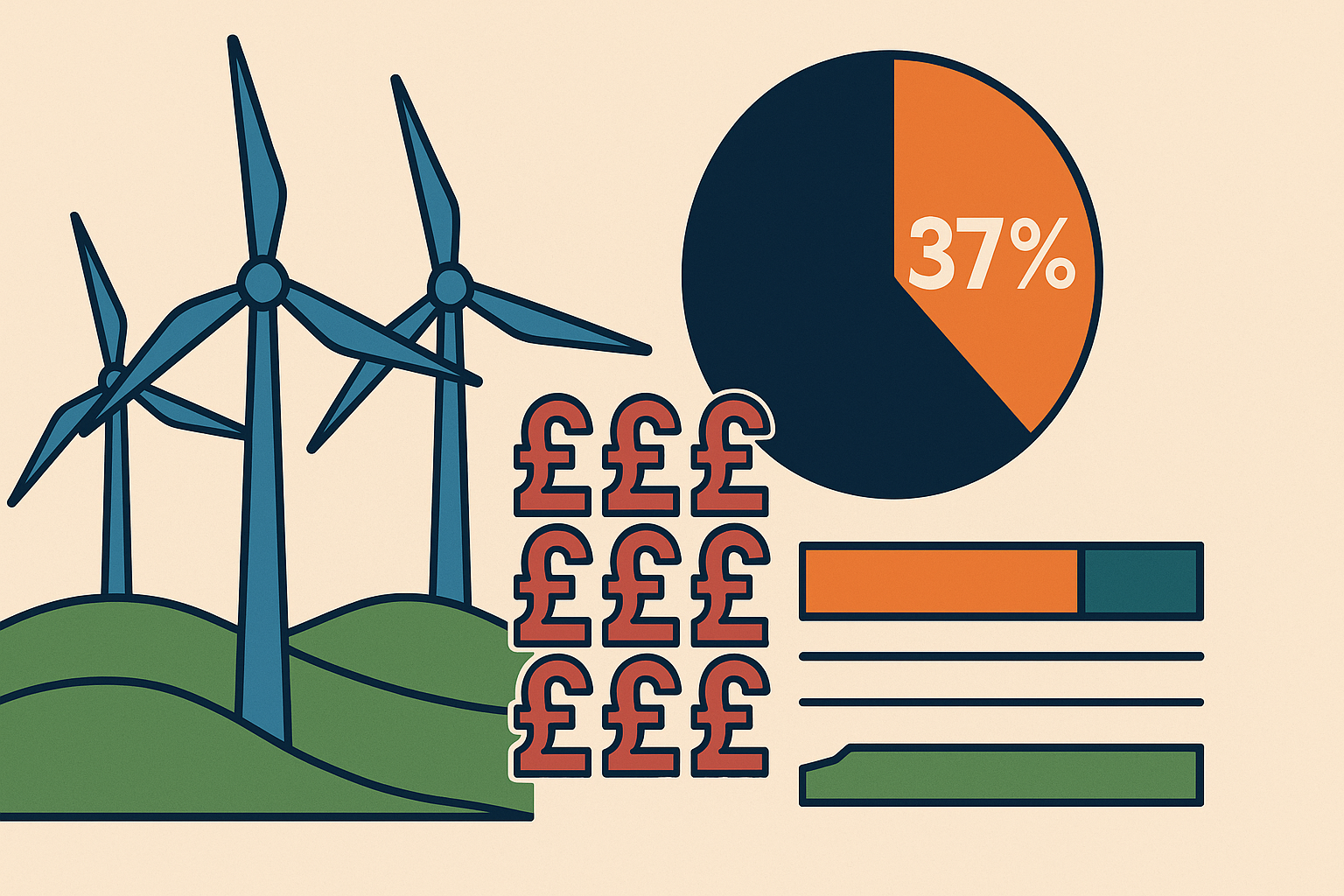Wind farms in northern Scotland were paid to withhold generating 37% of their planned electricity output during the first six months of 2024, as insufficient local demand and limited grid capacity prevented the power from being used or transported south.
According to research by energy analytics firm Montel, the curtailed output — totalling 4 terawatt hours — would have been enough to power every household in Scotland for the same six-month period. Wind farms in the region accounted for 86% of Britain’s total curtailed electricity (4.6TWh), marking a 15% rise compared to the same period last year.
The growing trend of curtailment is raising concerns about inefficiencies in the UK’s electricity system and its impact on consumer bills. Fintan Devenney, senior analyst at Montel, warned that curtailed volumes could continue to rise as more renewable projects come online.
Grid Limitations in Remote Areas
Many of Scotland’s largest wind farms are located in remote regions, including offshore sites in the Moray Firth, where there is minimal local electricity demand and limited transmission infrastructure to carry surplus power south.
The National Energy System Operator (Neso) manages the flow of electricity, intervening to prevent overloading the grid. This often means paying wind farms in the north to shut down while simultaneously paying gas-fired generators elsewhere to increase output.
Industry figures say decades of under-investment in grid infrastructure are to blame, and that upgrades — including controversial plans for large pylons across rural Scotland — are essential to improve capacity.
Cost to Consumers
Montel estimates Neso spent almost £117mn compensating northern Scottish wind farms for switching off in the first half of the year, largely covering subsidies lost due to curtailment. These balancing costs are ultimately charged to all UK energy consumers.
Neso said it is committed to minimising costs, claiming it has saved consumers £1.2bn over the past two years in areas under its control.
Future Challenges
The 2022 ScotWind seabed leasing auction is set to add almost 30GW of new offshore wind capacity in Scottish waters, potentially intensifying the curtailment issue unless grid capacity improves.
Subsidy rules are being revised to incentivise developers to voluntarily reduce output during oversupply.
The UK’s Department for Energy Security and Net Zero maintains that clean and affordable power by 2030 is achievable even with constraint payments, citing the largest electricity network upgrade in decades.
However, Scottish energy secretary Gillian Martin criticised the current UK energy system as “not fit for purpose,” calling for significant investment to enable a fully clean power network.








